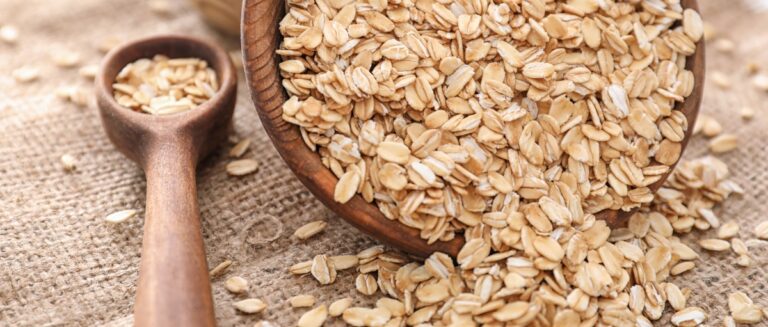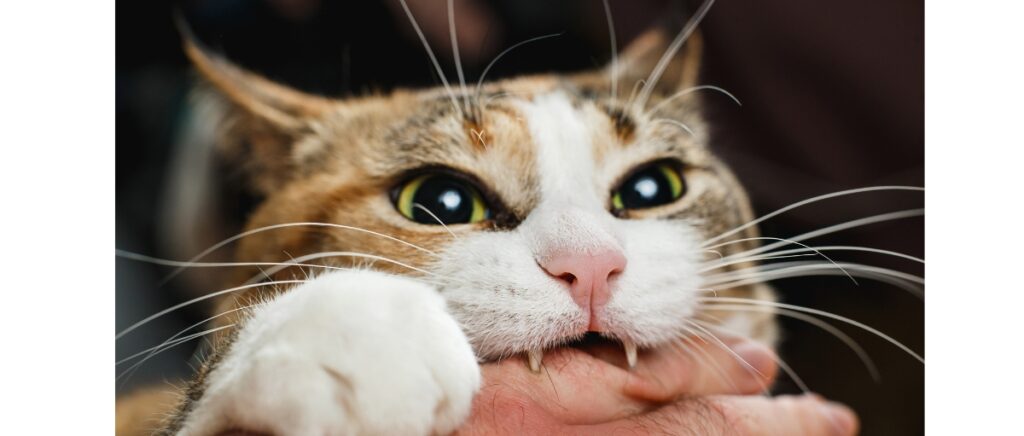You’re sitting in your favorite armchair, enjoying a peaceful evening with your feline companion curled up in your lap. As you gently stroke their fur, your cat suddenly turns and gives your hand a little nibble. It doesn’t hurt, but it leaves you wondering: What just happened?
Many pet parents can relate to the experiences shared by older adults, as 43.7% of them have reported owning a cat at some point in their lives. Cats have become cherished companions for those in their golden years. It’s important to understand that the “love bites” they sometimes give are a typical, though often misinterpreted, way for felines to communicate.
Why do cats bite when you pet them? Why do our furry friends engage in this behavior, and how should we respond? Whether you’re a longtime cat owner or new to the joys of feline companionship, understanding these gentle cat nibbles can deepen your bond and make your time together even more enjoyable.
What Are Love Bites?
If you’ve ever been on the receiving end of gentle cat nibbles from your feline friend, you’ve experienced a cat love bite. But what exactly are these curious gestures, and how can you tell them apart from more aggressive biting?
Defining Cat Love Bites
Love bites are gentle, usually painless nibbles that cats give to their owners during moments of cat affection or interaction. Unlike aggressive bites, love bites typically don’t break the skin or cause harm. They’re often accompanied by other signs of contentment, such as purring or kneading.
Love Bites vs. Aggressive Bites
It’s crucial to distinguish between love bites and aggressive bites. Here are some key differences:
- Intensity: Love bites are gentle and controlled, while aggressive bites are harder and may break the skin.
- Context: Love bites often occur during petting or playtime, whereas aggressive bites happen when a cat feels threatened or overwhelmed.
- Body language: During love bites, a cat’s body language is usually relaxed. With aggressive bites, you might notice signs of stress like flattened ears, dilated pupils, or a twitching tail.
When Love Bites Happen
Cat owners often report love bites occurring in these situations:
- During petting sessions, especially when the cat is very relaxed.
- While playing, as part of their natural hunting instincts.
- When seeking attention or trying to communicate a need.
- As a form of grooming behavior, mimicking how mother cats care for their kittens.
It’s important to note that every cat is unique, and their reasons for love biting can vary.
The Fine Line Between Affection and Overstimulation
While love bites are often a sign of cat affection, they can also indicate that your cat is becoming overstimulated. Cats have sensitive nerve endings in their skin, and prolonged sessions of petting your cat can sometimes lead to a sensory overload. In these cases, a love bite might be your cat’s way of saying, “I’ve had enough for now, thank you.” Here are some things to look out for:
- Sensitivity in specific areas: Cats may be more prone to overstimulation when being petted in sensitive areas like the belly or base of the tail.
- Individual tolerance levels: Each cat has a different threshold for how much petting they can enjoy before becoming overstimulated.
Learning to read your cat’s body language and respecting their boundaries can help prevent love bites from escalating into more forceful nips.
Why Do Cats Give Love Bites?
Understanding why cats give love bites can help you better interpret your feline friend’s behavior and strengthen your bond. While every cat is unique, there are several common reasons behind this curious nibbling behavior.
Displaying Affection
Do cats bite to show affection? Regardless of cat breed, believe it or not, those little nips can be a sign of love from your cat. This behavior often stems from kittenhood and can persist into adulthood for several reasons:
- Kitten behavior: Kittens typically develop social skills, boundaries, and self-control by interacting with their siblings and mother. Some cats carry this behavior into adulthood with their human companions.
- Mimicking grooming: Most cats spend between 30 and 50 percent of their day grooming themselves. When cats groom each other, they often use their teeth to nibble fur. In fact, your furry friend sees you as a member of their feline family, therefore they try to groom you.
Seeking Attention
Cats are clever creatures and quickly learn which behaviors get a response from their owners. Love bites might be your cat’s way of saying, “Hey, pay attention to me!”
- Learned behavior: If nibbling has successfully gained your attention in the past, your cat may repeat this behavior.
- Boredom or lack of stimulation: A cat not getting enough mental or physical stimulation might resort to love bites to initiate play or interaction. Cats need two or three 10 to 15-minute play sessions daily to be properly exercised.
Play and Predatory Behavior
Cats are natural predators, and play-biting is integral to their hunting instincts. Love bites during playtime might be your cat’s way of engaging in mock hunting behavior.
- Natural hunting instincts: Even well-fed house cats retain their predatory instincts, which can manifest as gentle biting during play.
- Lack of proper play outlets: If a cat doesn’t have enough toys or opportunities for play, it might direct its playful biting toward its owners.
Communication of Boundaries
Sometimes, love bites serve as a form of communication, helping your cat express their needs or boundaries.
- Signaling the end of a petting session: A gentle nibble might be your cat’s warning sign that it has had enough petting for now.
- Expressing discomfort or anxiety: If something in the environment is causing stress, your cat might use love bites to communicate their unease.
How to Respond to Cat Love Bites
When your cat gives you a love bite, your reaction can influence future behavior. Here’s how to respond effectively:
- Immediate reactions: Stay still and resist the urge to pull away quickly, as this might trigger your cat’s prey drive and lead to harder biting. Redirect attention, calmly offer a toy to redirect your cat’s biting behavior.
- Long-term strategies: Consistent responses, always respond the same way to love bites to help your cat understand boundaries. Positive reinforcement—reward your cat with treats or praise when they interact without biting.
- What not to do: Avoid punishment. Never hit, yell at, or spray your cat with water; this can damage your relationship and increase stress. Don’t encourage the behavior; be careful not to reward love bites with attention or play inadvertently.
Preventing Cat Love Bites
Prevention is often the best approach when dealing with love bites. Here are some strategies to minimize this behavior:
- Understanding Your Cat’s Body Language: Learn to recognize signs that your cat is becoming overstimulated or anxious. Look for cues such as tail twitching or swishing, ears flattening or turning back, skin rippling, and dilated pupils.
- Providing Appropriate Outlets for Energy and Play: Interactive toys are a great way to get energy out. Invest in toys that simulate hunting, like feather wands or puzzle feeders. Regular play sessions also work. Set aside time each day for active play with your cat.
- Creating a Stimulating Environment: Vertical spaces, cat trees, and perches allow your cat to observe their surroundings safely. Ensure your cat can access windows to window views to watch outdoor activity.
- Respecting Your Cat’s Boundaries: Let your cat initiate contact, and allow your cat to come to you for attention. Keep petting sessions short. Start with brief petting sessions and gradually increase the duration as your cat becomes more comfortable.
When to Be Concerned About Cat Bites
While love bites are usually harmless, there are times when biting behavior can indicate a problem:
- Signs that Biting Has Become a Problem: Increased frequency or intensity of bites, bites that break the skin, aggressive behavior, and body language accompanying bites.
- Health Issues That May Contribute to Biting: Pain or discomfort, cats may bite more if they’re experiencing pain from an underlying health condition. Another reason for this is cognitive decline; older cats may exhibit increased biting due to confusion or anxiety related to cognitive dysfunction.
- When to Consult a Veterinarian: Seek professional advice if you notice sudden changes in biting behavior, other signs of illness or distress, such as changes in appetite or litter box habits, bites that seem aggressive rather than playful or affectionate
Nurturing Your Bond with Your Feline Friend
Understanding cat love bites is important to building a strong, loving relationship with your feline companion. Recognizing the reasons behind this behavior and responding appropriately can enhance your communication and deepen your bond.
Love bites are typically a sign of affection or playfulness rather than aggression. To manage this behavior, respond calmly and consistently, reinforcing positive interactions. Pay close attention to your cat’s body language to avoid overstimulation and ensure a stimulating environment with ample play opportunities. If you notice a sudden change or increase in aggressive biting behavior, consult a veterinarian for guidance.
As you implement these strategies, you likely find that instances of love bites decrease while your overall enjoyment of your cat’s company increases. Who knew your furry friend could improve your health?
Cherish the unique ways your cat shows affection, and celebrate the special bond you share. After all, the companionship of a cat can be one of life’s greatest joys, especially in your golden years.
Sources
National Center for Biotechnology Information. (2020). The effects of environmental enrichment on cats. NCBI. https://www.ncbi.nlm.nih.gov/pmc/articles/PMC7330097/
Cat Care Society. (2024). Overstimulation in cats. Cat Care Society. https://catcaresociety.org/overstimulation-in-cats/
PetsRadar. (2024). Why is my cat play-biting? A behaviorist reveals 3 reasons. PetsRadar. https://www.petsradar.com/advice/why-is-my-cat-play-biting-a-behaviorist-reveals-3-reasons
Hill’s Pet Nutrition. (n.d.). Why cats groom and lick themselves. Hill’s Pet. https://www.hillspet.com/cat-care/behavior-appearance/why-cats-groom-and-lick-themselves?lightboxfired=true#
Petplan. (2021). 10 signs your cat loves you. Petplan. https://www.petplan.co.uk/pet-information/cat/advice/10-signs-your-cat-loves-you/
PetMD. (2024). How long should you play with your cat every day? PetMD. https://www.petmd.com/cat/general-health/how-long-should-you-play-your-cat-every-day











